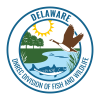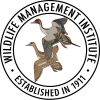Connecticut Department of Energy and Environmental Protection
The Connecticut Department of Energy and Environmental Protection (DEEP) is charged with conserving, improving and protecting the natural resources and the environment of the state of Connecticut. The Bureau of Natural Resources within DEEP is charged with managing the state’s natural resources (particularly fish, wildlife, and forests) through a program of regulation, management, research, and public education. Growing human populations encroach upon, modify or destroy wildlife habitat, threatening or endangering some wildlife species in the process.


















